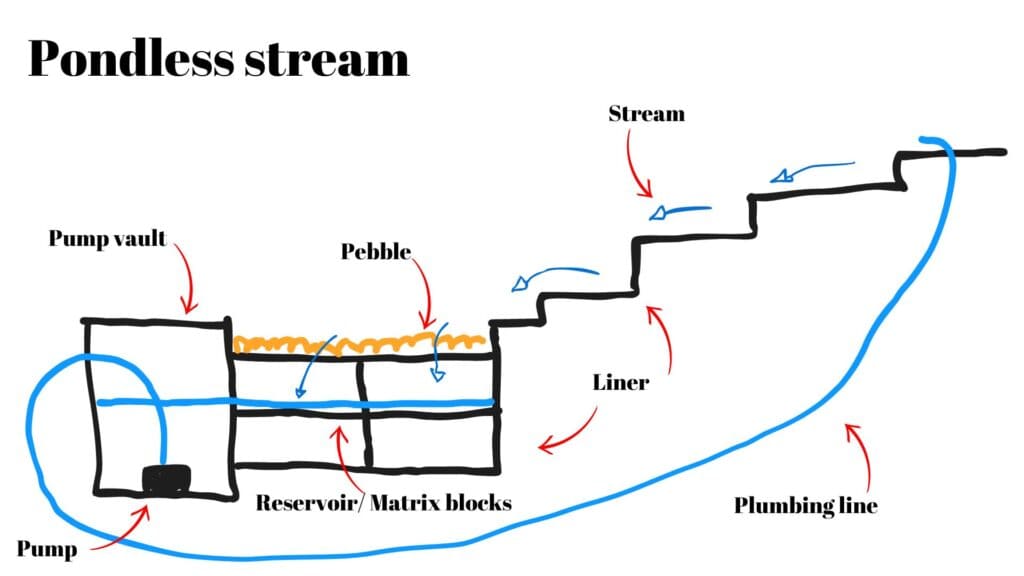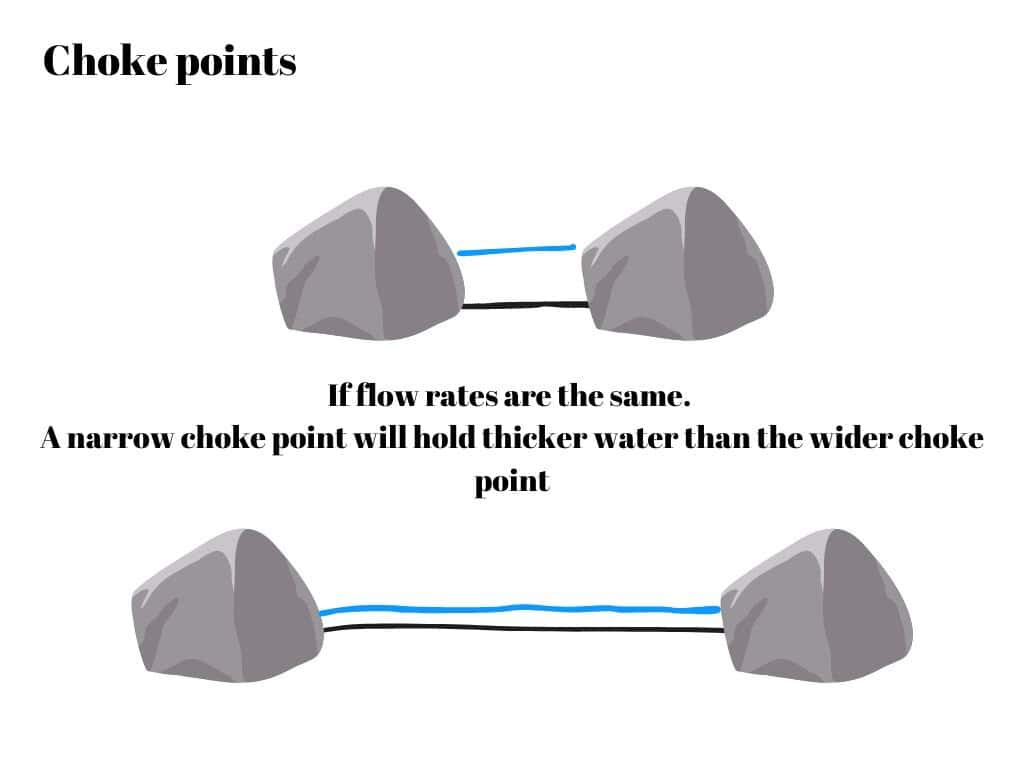Water in motion is important when building a pond, a pond with a stream, a pond-less stream, or a pond system with a Negative Edge. In this post, we’ll cover the basics of water in motion, why it’s important, how to calculate it, and how to manage it effectively.
If you prefer you can watch the video I made on the topic.
What is Water in Motion and Why is it Important?
When you have a pond with a stream, the pump sends water to the top of the stream, and gravity returns it to the pond. If the pump stops, either due to being turned off or a power outage, all the water in the stream will flow back into the pond. If your pond is already full, this can cause overflow.

While overflow might not seem like a big deal, especially in a large pond with a small stream, it can lead to significant water loss. When the pump restarts, the water level in the pond can drop, which can be problematic. In a pond where the pumps sit in a skimmer, or an intake bay (an article on how a skimmer or intake bay works), a low water level can starve the pumps of water, potentially causing damage.

In pond-less systems or those with a negative Edge, understanding water in motion is essential for determining the size of your reservoir.

A Negative Edge allows the pond to overflow into a buried reservoir, creating surface tension that pulls debris into the reservoir. This setup can help drought-proof your pond by storing additional water, reducing the need for frequent top-ups.

How to Calculate Water in Motion
To manage water in motion, you need to calculate its volume.
The formula for volume is simple:
Volume= Length × Width × Depth
I use the metric system, 1 cubic meter equals 1,000 litres.
For those using the imperial system, 1 cubic foot equals 7.5 gallons.
Practical Application
If you have a pond with a large and wide stream, you need to allow for a significant water level fluctuation inside the pond if the pump shuts off.
In a pond-less stream, the reservoir needs to be able to accommodate at least twice the amount of water in motion.
In a pond with a negative edge, you need to be aware that a potion of the ponds surface is in motion. When the pumps stop, a few inches of the pond will spill over the negative edge and end up in the reservoir.
Again, this reservoir needs to accommodate at least twice the water in motion. A large pond with a negative edge will add significant expense. I generally prefer an intake bay (article on building an intake bay), it’s cheaper and easier.
Additional Considerations
Matrix Blocks: Use matrix blocks (Amazon link) to maximise free space in your reservoir, if you use rocks the amount of space available for water is significantly reduced. I made a video on alternative to AquaBlox and similar.
Surface Water: Include surface water from the pond and any bog filters in your calculations. For larger ponds, this can be significant!
Lower Pump Flows: Reducing pump flows can minimise water in motion, but balance this with your aesthetic goals. Here’s a video on different flow rates.
Choke Points: Widen choke points to reduce the depth of water flowing over them, In a large pond with a negative edge this can greatly reduce the amount of water in motion.

Understanding and managing water in motion is vital for ponds with reservoirs or large streams. For the average fish pond this stuff isn’t important.
But if you want to re-create a stream system like something found in nature it’s an important topic to consider.
I hope this article and the videos were helpful, if they were feel free to check out more of my content. Thanks for reading. See ya!

